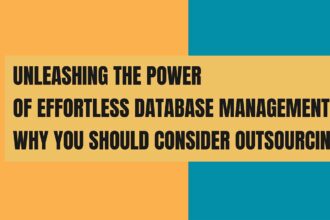In an era where data has become key to business operations, mastering data governance has emerged as a critical imperative for organizations aiming for sustained success. Data governance goes beyond merely managing data; it is a holistic approach to ensure that data is accurate, accessible, secure, and aligned with business objectives.
What Data Governance Entails
Data governance encompasses the policies, procedures, and controls put in place to manage data throughout its lifecycle. It involves defining data ownership, establishing data quality standards, ensuring compliance with regulations, and fostering a data-driven culture within the organization. A robust data governance framework is essential for effective implementation, ensuring that the organization’s approach to data is not only comprehensive but also adaptable to its evolving needs.
In essence, mastering data governance allows organizations to treat their data as a valuable resource, aligning it with business goals and leveraging it to gain a competitive edge. From informed decision-making to personalized customer experiences, data governance lays the foundation for maximizing the potential of this valuable asset.
Benefits of Leveraging a Comprehensive Data Governance Framework
1. Enabling Data-Driven Innovation:
Innovation in today’s business landscape is often fueled by data. Mastering data governance lays the groundwork for organizations to experiment, analyze, and derive insights from their data. It enables a culture of continuous improvement and innovation, allowing businesses to stay agile in a rapidly changing marketplace.
2. Ensuring Data Quality and Accuracy:
Reliable data is at the heart of informed decision-making. Data governance frameworks include mechanisms to ensure data quality and accuracy. By defining data standards, implementing validation processes, and establishing data stewardship roles, organizations can enhance the trustworthiness of their data. Accurate data is not just a requirement for compliance but a catalyst for driving precision in business operations.
3. Mitigating Risks and Ensuring Compliance:
Regulatory requirements surrounding data are becoming increasingly stringent. Mastering data governance helps organizations navigate this complex landscape by establishing protocols for data privacy, security, and compliance. It mitigates risks associated with data breaches, unauthorized access, and non-compliance with industry-specific regulations, fostering a secure and legally sound data environment.
4. Fostering Data Transparency and Accessibility:
Access to relevant data is vital for employees at all levels of an organization. Data governance ensures transparency in data processes, making it clear who owns the data, how it is used, and what standards govern its quality. By fostering a culture of data accessibility, organizations empower their teams to make data-driven decisions, thereby enhancing overall operational efficiency.
5. Driving Collaboration Across Departments:
Effective data governance breaks down silos within an organization. It encourages collaboration and communication across departments by establishing a common understanding of data definitions, standards, and usage. This cross-functional approach not only improves data consistency but also facilitates a more unified and strategic approach to achieving organizational objectives.
6. Measuring and Improving Data Performance:
Data governance involves establishing key performance indicators (KPIs) to measure the effectiveness of data management processes. By continuously monitoring and analyzing these metrics, organizations can identify areas for improvement, optimize data workflows, and enhance overall data performance.
7. Enhancing Customer Trust and Experience:
Customers entrust organizations with their data, expecting it to be handled responsibly. Robust data governance practices build customer trust by safeguarding their information and using it ethically. A customer-centric data governance approach ensures that organizations can deliver personalized experiences while respecting privacy preferences and regulatory requirements.
8. Optimizing Data Lifecycle Management:
Data goes through a lifecycle, from creation to archival or deletion. Effective data governance optimizes this lifecycle by defining clear processes for data retention, archival, and disposal. This not only aligns with regulatory requirements but also ensures that organizations are not burdened with unnecessary data, streamlining storage and enhancing overall efficiency.
9. Facilitating Change Management:
As organizations evolve, so does their data landscape. Data governance facilitates effective change management by providing a structured approach to incorporating new data sources, technologies, and business processes. This adaptability ensures that data remains a valuable asset rather than a hindrance to organizational growth.
Conclusion
In a world where data is ubiquitous and indispensable, companies must make sure data serves as a strategic asset rather than a liability, empowering organizations to navigate the complexities of the digital landscape with confidence. By fostering transparency, mitigating risks, and driving a culture of data-driven decision-making, data governance emerges as the cornerstone of business success in the data-centric era.
Organizations that prioritize mastering data governance position themselves not only for compliance and security but also for innovation, efficiency, and sustained growth in the dynamic and competitive business landscape.











